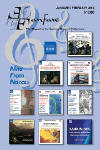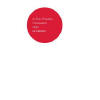Texte paru dans: / Appeared in:

Fanfare Magazine: 36:3 (01-02/2013)
Pour
s'abonner / Subscription information
Les abonnés à Fanfare Magazine ont accès aux archives du
magazine sur internet.
Subscribers to Fanfare Magazine have access to the archives of the magazine
on the net.
Signum
SIGCD287

Consultez toutes les évaluations recensées pour ce cd
~~~~ Reach all the evaluations located for this CD
This is the second speculative album set during the late 16th/early 17th century in the Italian States to come across my desk in the last month, and the second as well that’s a rerelease. Like Lo spozalizio: The Wedding of Venice to the Sea on Hyperion Dyad 22072, it makes much of the artistic brilliance with which the powerful Venetian ruling class surrounded themselves and celebrated their city and its vast trading wealth. Like that King’s Consort album, too, the theme is stretched more than a bit in fitting music to occasion. St. Mark’s maestro di cappella in 1595 was Baldassare Donato whom, McCreesh states in his liner notes, was “a sound administrator, if a somewhat insipid composer.” (I would respectfully disagree. He didn’t continue the sacred tradition of his teacher, Willaert, but his lighter madrigals reveal both wit and an ear for memorable themes in the then-modern, popular manner.) Given how jealous of position and performance Donato was, however—his vicious fights earlier in his career with Cipriano de Rore were a scandal the Venetians repeatedly gossiped about—is it likely he would have chosen music for the coronation of a doge without including anything of himself? Or that nearly everything in the program would have been by the Gabrielis, to the exclusion of all else?
None of this of course is a reflection on the performances. Originally recorded in 1989 for Virgin Classics, the mix of clever programming and crisp execution hasn’t dimmed with the years. Nor has the leonine splendor deliberately invoked through the size and style of the forces involved. McCreesh employed 16 singers, from falsetto to bass, and 42 instrumentalists, mostly an oversized “loud” ensemble, to recreate this event. Shawms, sidedrums, organs, natural trumpets, several flavors of cornetts and sackbuts: What early-music conductor wouldn’t want to revel in such sounds?
The writing of the Gabrielis—paradoxically sober yet sumptuous—is invariably impressive, none more so than in the various Mass movements by Andrea Gabrieli. Interpolating organ solos, instrumentals for various broken and unbroken ensembles, and plainchant was both a nuanced decision, and a smart one from the standpoint of varied programming. So was the mix of sacred and secular, hardly peculiar to Venice, but artistically exemplified by La Serenissima during its years of greatest power. Andrea Gabrieli’s O sacrum convivium is the sweetest example here of the former, while Gussago’s Sonata la leona for two organs is a fine instance of the latter, strutting to an overtly popular style tune. The whole thing finishes off with Giovanni Gabrieli’s Omnes gentes, a celebratory motet that weaves counterpoint and homophony ingeniously, only to add in its final measures (on this record, at any rate) additional brass sonorities for as rousing a finish as could be imagined.
The sound
is for the most part handled expertly, with excellent balance, and a
superior level of clarity. The procession cut is poorly done, however. A mix
of external noises (bells, crowds off in the distance, drums, fireworks) in
a very resonant outdoor environment suddenly has a series of intradas and a
trumpet sonata imposed on them, in a closely miked studio, and the mismatch
is obvious. That aside, this remains a delight of a release.
Strongly recommended.
Fermer la fenêtre/Close window
Cliquez l'un ou l'autre
bouton pour découvrir bien d'autres critiques de CD
Click either button for many other reviews


